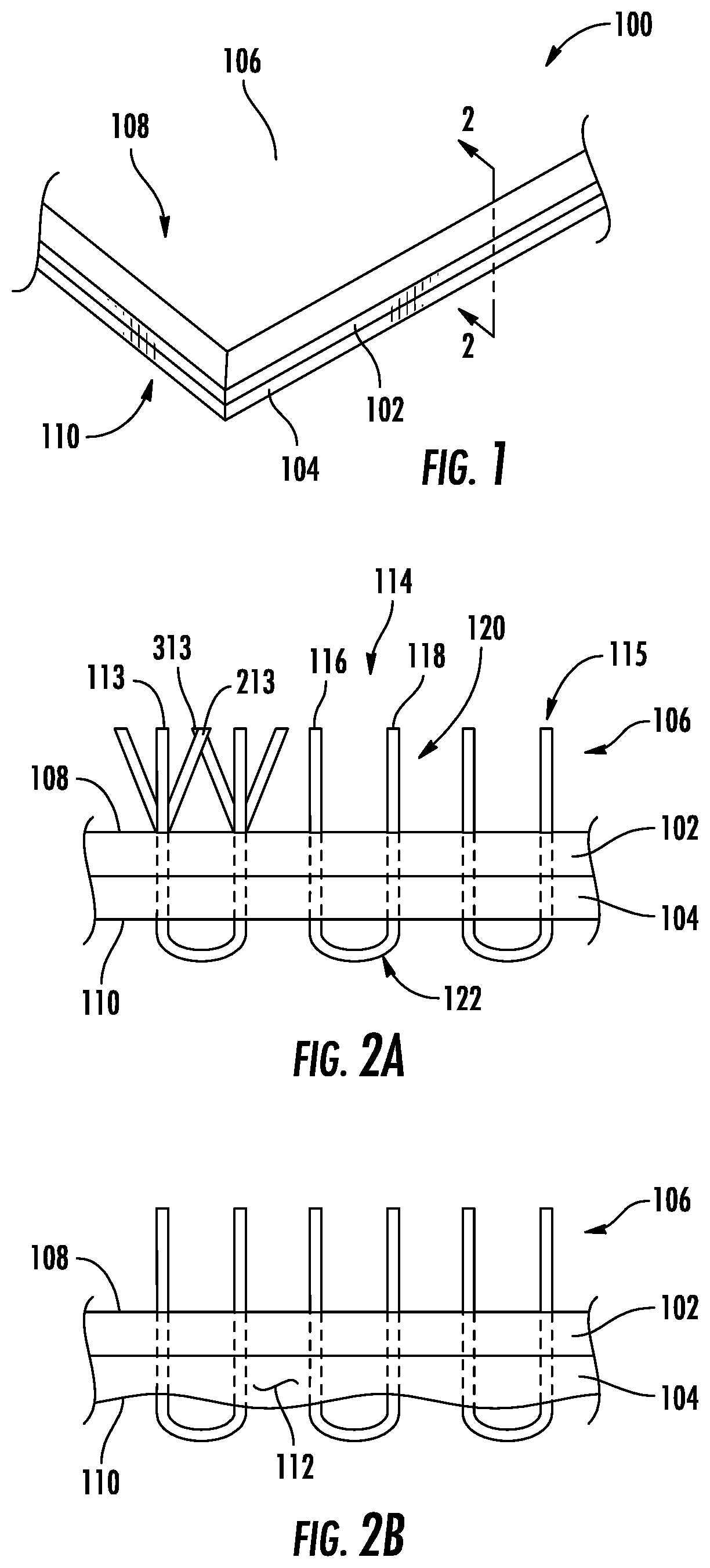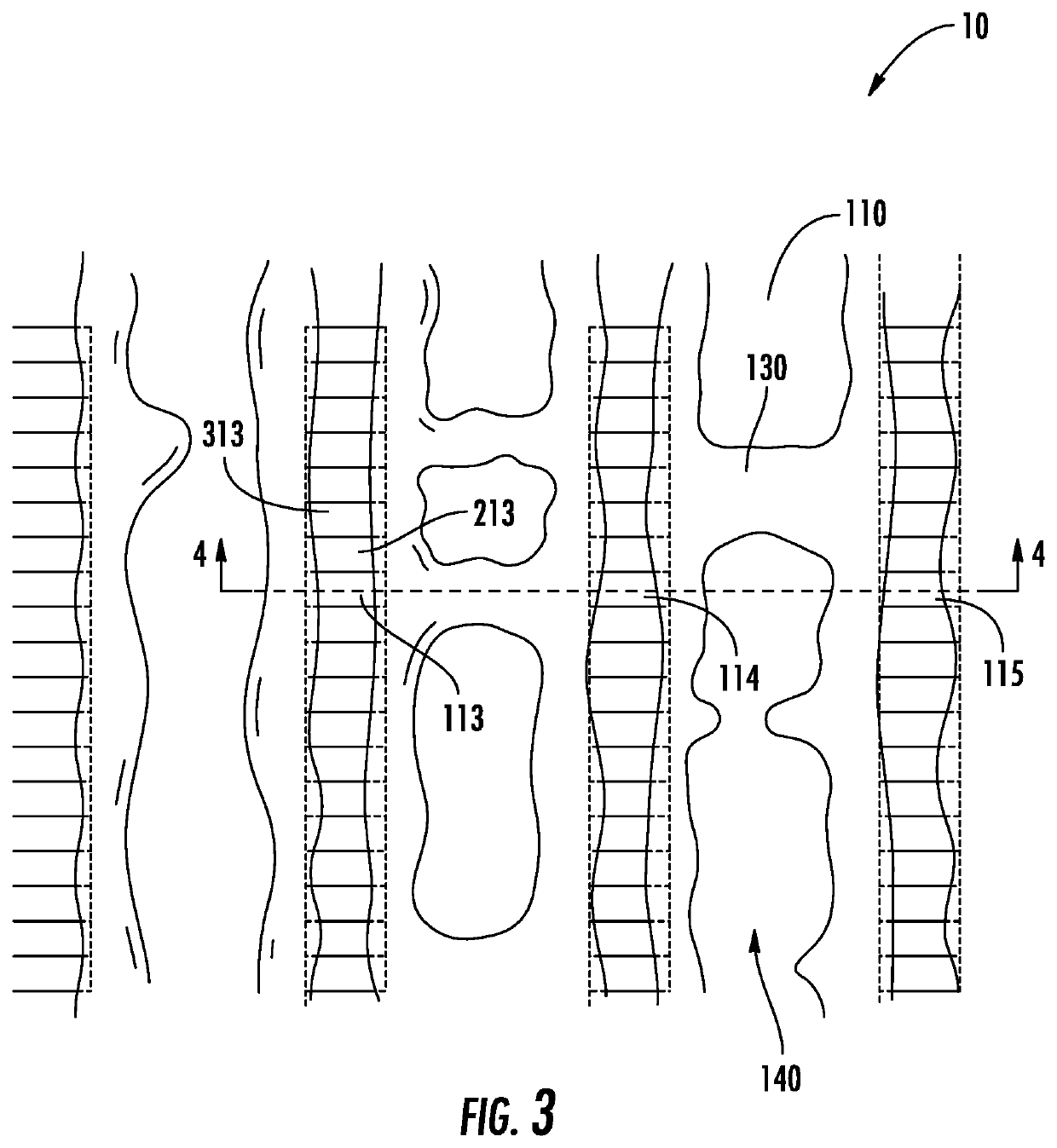Pile fabrics and systems and methods for forming pile fabrics
a pile fabric and fabric technology, applied in the field of pile fabrics and the formation of pile fabrics, can solve the problems of reducing the ability to recycle spent or discarded pile fabrics, and wasting pile fabrics in landfills
- Summary
- Abstract
- Description
- Claims
- Application Information
AI Technical Summary
Benefits of technology
Problems solved by technology
Method used
Image
Examples
Embodiment Construction
[0044]As will be described in greater detail, pile fabrics, systems for forming pile fabrics and methods for forming pile fabrics preferably avoid the use of binder compositions, thus potentially reducing material and / or energy costs and enabling the recycling of a larger quantity of spent pile fabrics, which reduces the accumulation of pile fabric waste. In some applications, such as those that utilize olefin-based primary backing materials, thermal stability may be improved by heat stabilizing (pre-shrinking) the materials prior to use. In some applications, the omission of binder compositions is facilitated by a melt bond that secures pile tufts to a primary backing material of the pile fabric. The melt bond, which may be disposed only at the back side of the primary backing material, is formed of melted material of the back stitch portions of the pile tufts and melted material of a layer of thermoplastic material. In some applications, only the back of the pile fabric is heated ...
PUM
| Property | Measurement | Unit |
|---|---|---|
| Liquid permeability | aaaaa | aaaaa |
| Shrinkage | aaaaa | aaaaa |
| Permeability | aaaaa | aaaaa |
Abstract
Description
Claims
Application Information
 Login to View More
Login to View More - R&D
- Intellectual Property
- Life Sciences
- Materials
- Tech Scout
- Unparalleled Data Quality
- Higher Quality Content
- 60% Fewer Hallucinations
Browse by: Latest US Patents, China's latest patents, Technical Efficacy Thesaurus, Application Domain, Technology Topic, Popular Technical Reports.
© 2025 PatSnap. All rights reserved.Legal|Privacy policy|Modern Slavery Act Transparency Statement|Sitemap|About US| Contact US: help@patsnap.com



